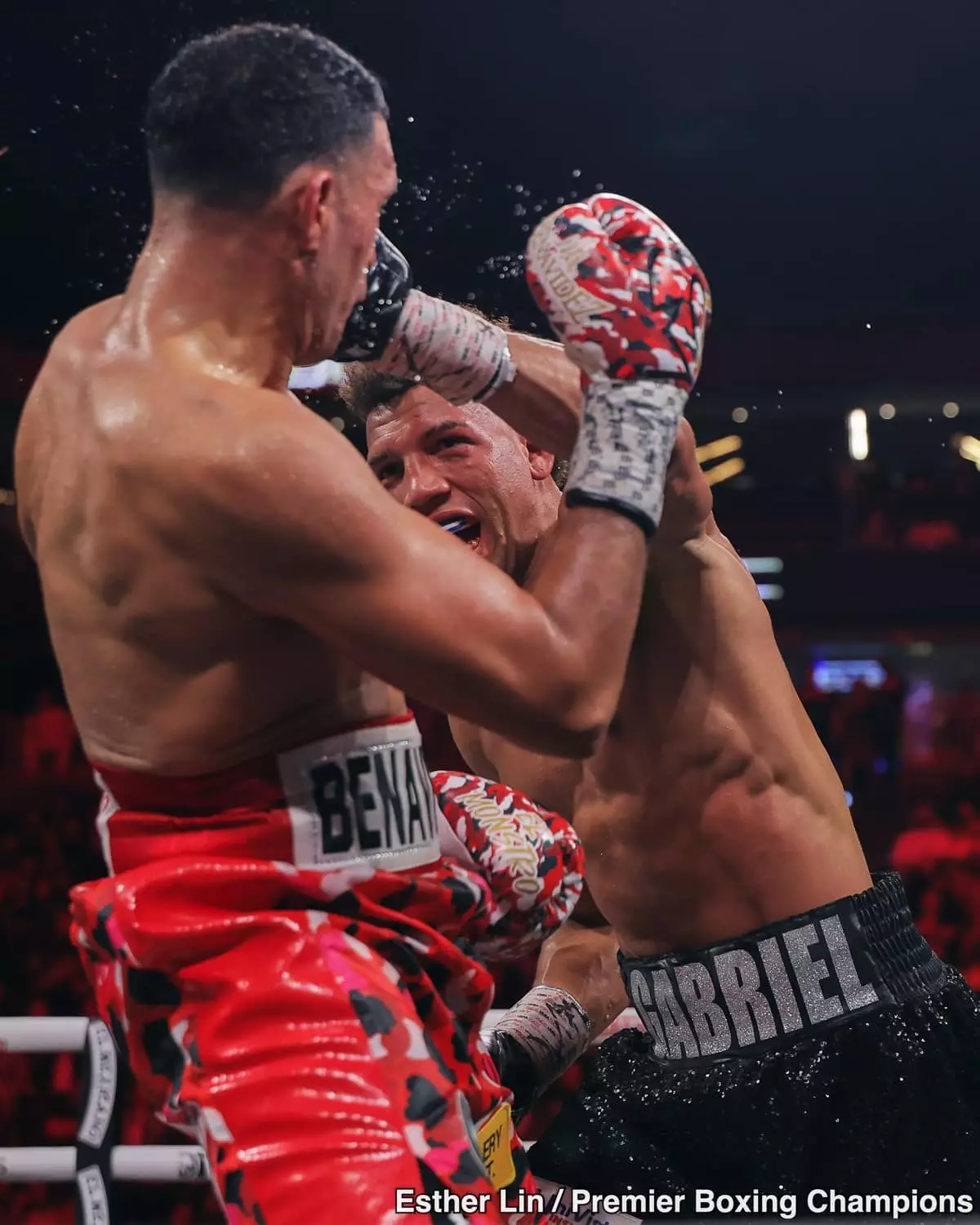The recent bout between David Benavidez and David Morrell has sparked heated discussions among boxing enthusiasts and analysts alike. A fight that took place at the T-Mobile Arena in Las Vegas last Saturday turned into an unexpected spectacle, culminating in a unanimous decision victory for Benavidez. However, this outcome has led to questions regarding the validity and fairness of the judges’ scores, which appear to contrast sharply with the perceived dynamics of the fight itself.
As the dust settled post-fight, it was evident that David Morrell, despite succumbing to the judges’ decision, exhibited a more potent arsenal in his punches. Visual interpretations of both fighters told a narrative of their own; while Benavidez exited the ring with a swollen visage befitting of a war-torn contender, Morrell appeared relatively unscathed. The disparity in their physical conditions after twelve rounds was not just a testament to the fight’s intensity, but indicative of the said disparity in striking effectiveness.
Morrell’s punches, thrown with precision and power, consistently connected, illustrating his aggression and skill in the ring. In contrast, Benavidez appeared to rely on volume rather than impact, with his punches often characterized as rapid-fire slaps that may have impressed the judges but lacked the destructive quality of Morrell’s strikes. Many ringside and television viewers opined that a draw, if not a win for Morrell, would have been a more just interpretation of their spirited exchange.
The judges’ scorecards, revealing figures of 115-111, 115-111, and a startling 118-108 in favor of Benavidez, have bred substantial skepticism. It was widely recognized that Morrell inflicted considerable damage on Benavidez throughout the match, including dropping him in the 11th round. This pivotal moment raised eyebrows about the judging standards and left many pondering how such a margin could be applied given the fight’s competitive nature.
Moreover, the circumstances surrounding Morrell’s penalty for hitting after the bell also drew criticism. This incident highlighted a lack of consistency in officiating, particularly in how retaliatory actions are perceived in the sport. Critics of the decision argue that the context of the situation should have warranted a more thorough examination by the referee, as Benavidez had instigated the confrontation.
The Call for a Rematch
In the aftermath of the fight, Sampson Lewkowicz, Benavidez’s promoter, has expressed willingness to facilitate a rematch, contingent upon the spectators’ desires. He asserted that the intriguing nature of the contest—marked by high stakes and palpable tension—should be enough to warrant a second showdown. Lewkowicz acknowledged the competitive aspect of the fight, suggesting that even though Benavidez might have edged out numerous rounds, the overall competitiveness might incline the public toward wanting to see the two fighters battle once more.
This sentiment is echoed by many fans who believe that a rematch could rectify the questionable decision. Rand at inadequate performances in notable rematches often muddle the histories of fighters, yet each bout is an opportunity for redemption and re-evaluation of their prowess.
As the boxing landscape continues to evolve with high-stakes matches on the horizon, Benavidez finds himself in a delicate position. The potential mandatory title shot against the winner of the upcoming Beterbiev vs. Bivol fight looms over him like a cloud. Depending on the outcome, he might be left waiting on the sidelines which could hinder his marketability and momentum in a competitive environment.
Conversely, pursuing a rematch with Morrell could serve as a bridge to reclaiming his standing in the sport. Such a bout could not only satisfy the audience’s appetite for high-caliber action but also reignite discussions around each fighter’s capabilities, thereby contributing to their narratives.
The Benavidez vs. Morrell bout has historically significant ramifications for the boxing community, highlighting the ongoing debate regarding judging, competitiveness, and parity in the sport. If a rematch materializes, fans and analysts alike will be keen to witness the unfolding of this dramatic rivalry. Ultimately, the outcome will not only influence the careers of both fighters but also reflect the integrity of the sport itself as it grapples with the complexities of performance evaluation within the ring. The question remains: will justice be served in the squared circle?

